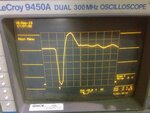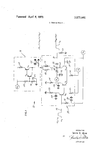Siniša
Full Member level 6

- Joined
- Jul 14, 2002
- Messages
- 383
- Helped
- 87
- Reputation
- 174
- Reaction score
- 18
- Trophy points
- 1,298
- Location
- Windsor ON Canada
- Activity points
- 2,692
I am trying to design pulse generator with adjustable width 2ns-10ns and adjustable amplitude up to 20V. I am not sure what solution might be best to achieve these specs, so far I found Jim Williams AN98, figure 12.
If anyone has better configuration suited for this, please let me know. Also are there BJT's with 0.5A/30V that have low capacitance <3pF? What PNP /NPN would you recommend for this application?
Also in this AN what is purpose of D1?
Thanks!
If anyone has better configuration suited for this, please let me know. Also are there BJT's with 0.5A/30V that have low capacitance <3pF? What PNP /NPN would you recommend for this application?
Also in this AN what is purpose of D1?
Thanks!






